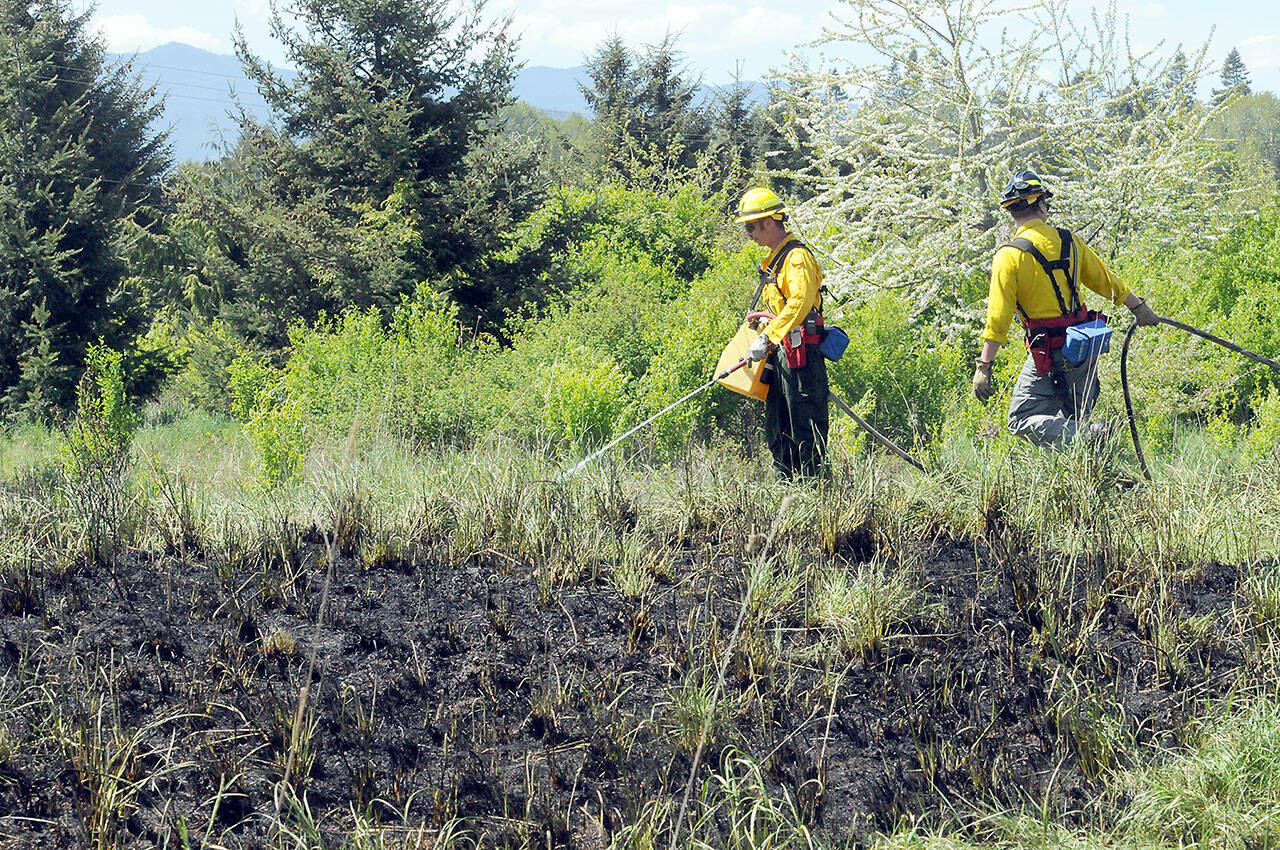Dry conditions have led to burning restrictions in both Clallam and Jefferson counties.
Clallam County Fire Marshal George Bailey made the decision to enact a ban on most burning on June 14 through Oct. 1 unless conditions warrant a total burn ban.
Bailey said in an interview the county traditionally maintains a burn ban from July 1-Oct. 1.
“This year is pretty dry,” he said. “(I tend to) look at foliage and humidity levels and (Department of Natural Resource) ratings.”
While he hasn’t enacted a burn ban sooner before, he did extend the ban in 2022 from Oct. 1 to Oct. 7 because of drier conditions.
In Clallam, restrictions now apply to all outdoor burning except recreational fires used for pleasure, religious, ceremonial, warmth, cooking or similar purposes, according to Bailey.
Recreational fires limited to 3-feet in diameter and 2-feet in height are permitted unless further banned by extreme weather conditions.
Propane weed burners are not allowed with Bailey saying, “it is my belief that they pose a significant risk as typically they are used on driveways where fire protection is not always readily available to prevent accidental spread to adjacent combustibles/dry grass, etc.”
Fires for debris disposal are illegal and not considered recreational, he said, and if conditions are upgraded to a “High Fire Danger,” then all outdoor burning, including recreational fires, will be prohibited, except within the Olympic National Park and other controlled campgrounds.
Millions of acres continue to burn across North America from wildfires with several eastern states and provinces seeing dangerous air quality and drier conditions than anticipated.
Smoke could fill the Olympic Peninsula skies again this summer, experts say.
Multiple agencies report wildland fires in Canada are burning more areas — and earlier than expected, compared to previous years.
Climate prediction forecasters with the National Oceanic and Atmospheric Administration (NOAA) predict warmer temperatures than average for July-September in the Olympic region, most of Washington state and much of the United States.
The precipitation outlook is also lower than average for that time frame in the Pacific Northwest, according to NOAA forecasters.
The significant wildland fire potential is above normal for Washington in July-September, too, particularly because of the volatility of cheatgrass that could serve as fuel, according to representatives with the Northwest Interagency Coordination Center (NWCC) that serves as the focal point for inter-agency resource coordination.
“We are looking at maybe our most challenging fire season ever in Western Washington,” Bailey said with conditions east of the Cascades being similar on the west side.
Bailey said other jurisdictions like in Jefferson County have higher areas of risk — hence, why they put up restrictions on June 4.
Assistant Fire chief Brian Tracer with East Jefferson Fire and Rescue, said he and partnering agencies have promoted using the word “restrictions” over “ban” because at “different levels, different things occur.”
He said they moved to moderate restriction for yard debris burns due to drier and warmer temperatures, and they coordinated with DNR, NOAA and local fire chiefs and Jefferson County’s fire marshal on the decision.
Jefferson County’s burn restriction will be in effect for all land clearing or outdoor burning through at least Sept. 30.
Tracer said they try not to go backwards with restrictions and that when restrictions are put in place, “it’s not just a knee jerk reaction.”
Across the Olympic Peninsula, he said there are many microclimates and that in hills some areas are drier, so they check conditions daily this time of year.
Fire officials recommend providing at least 30 feet of defensible space around all structures to provide an opportunity to fight a fire if necessary.
To check Department of Natural Resources’ burn restrictions guidelines, visit dnr.wa.gov/burn-restrictions. For more on State Park restrictions, visit parks.wa.gov/1186/Parks-burn-bans.


